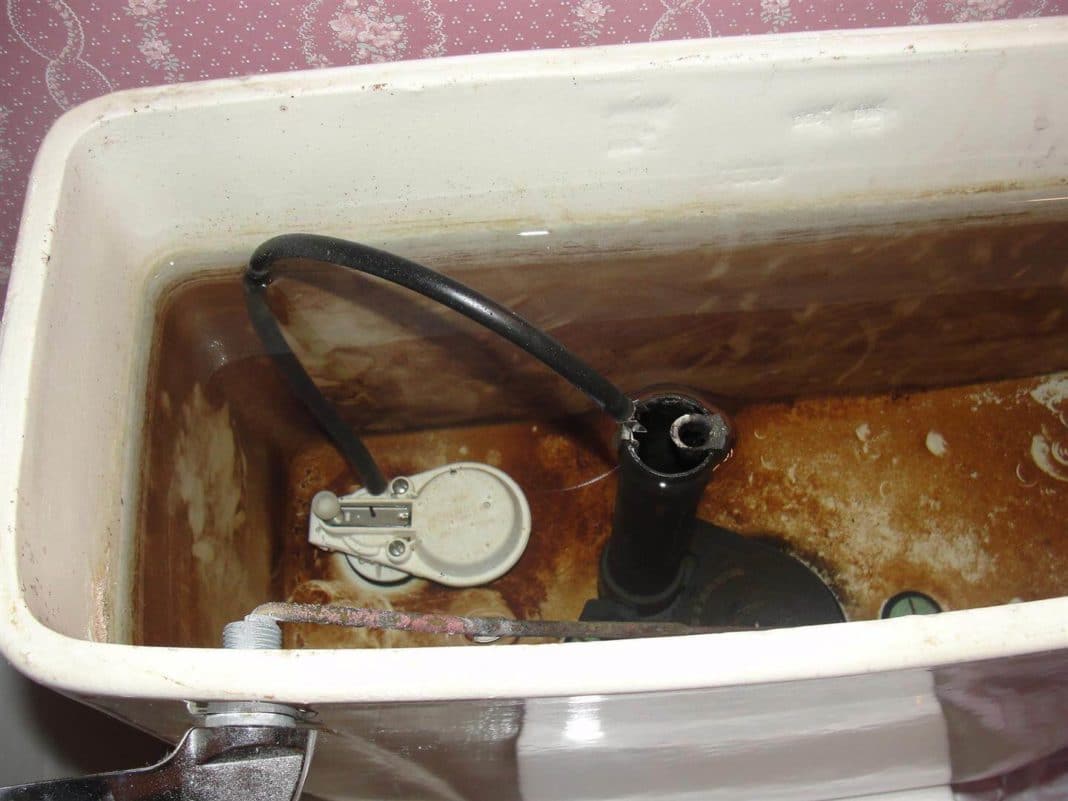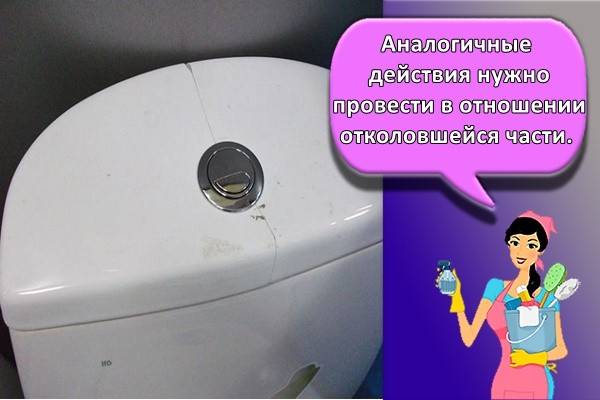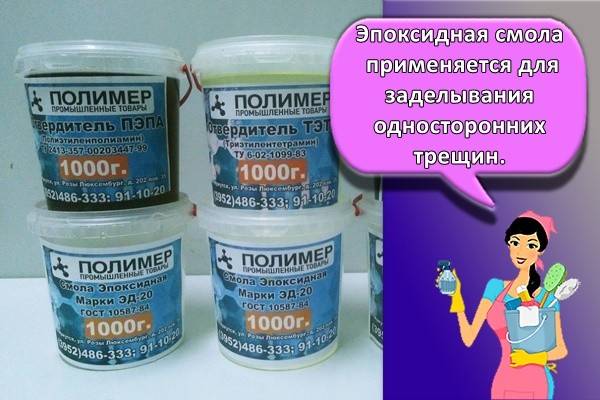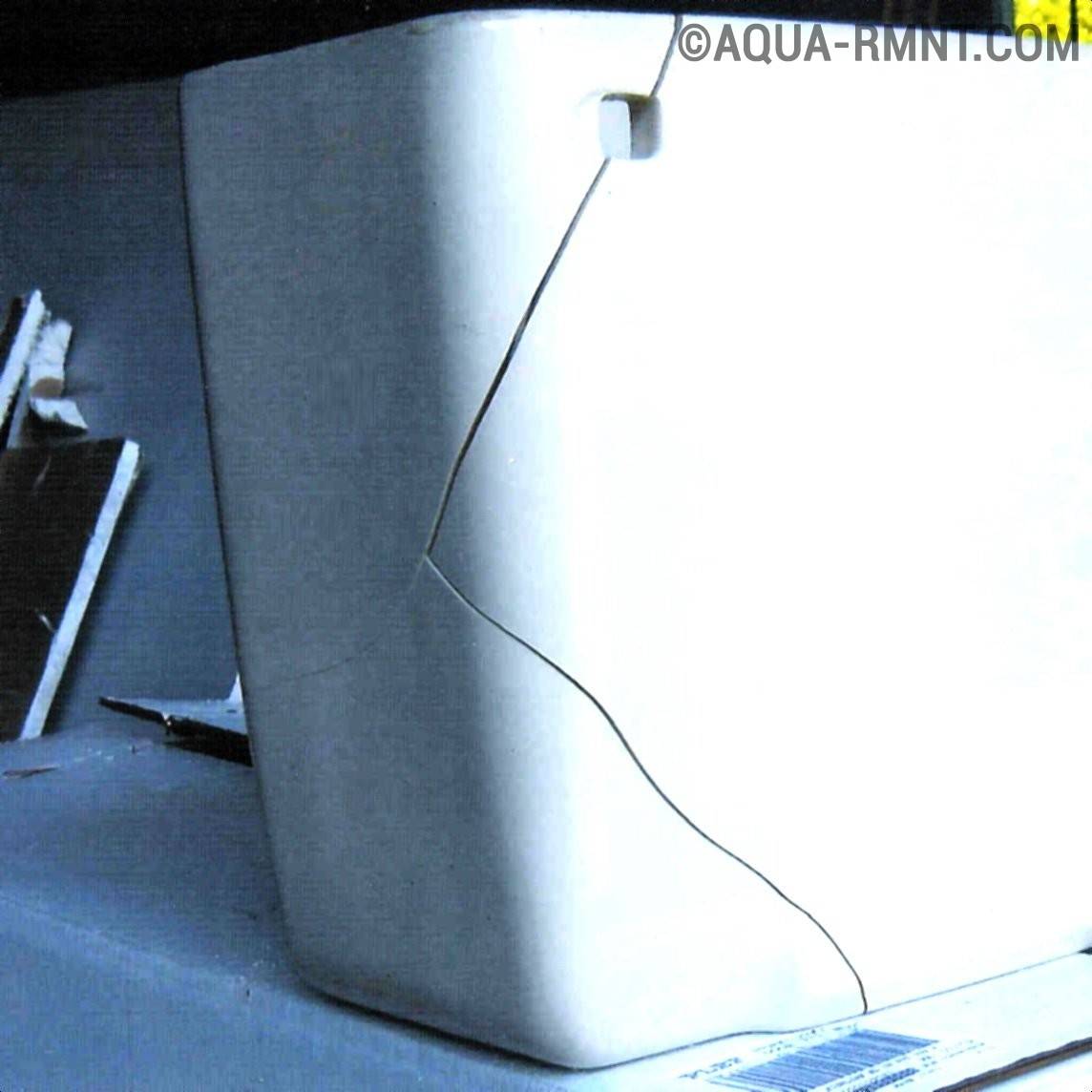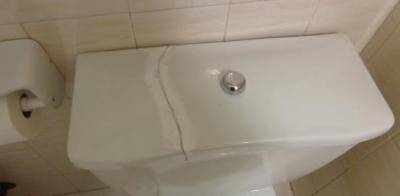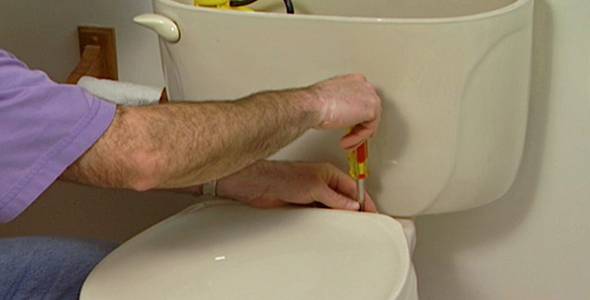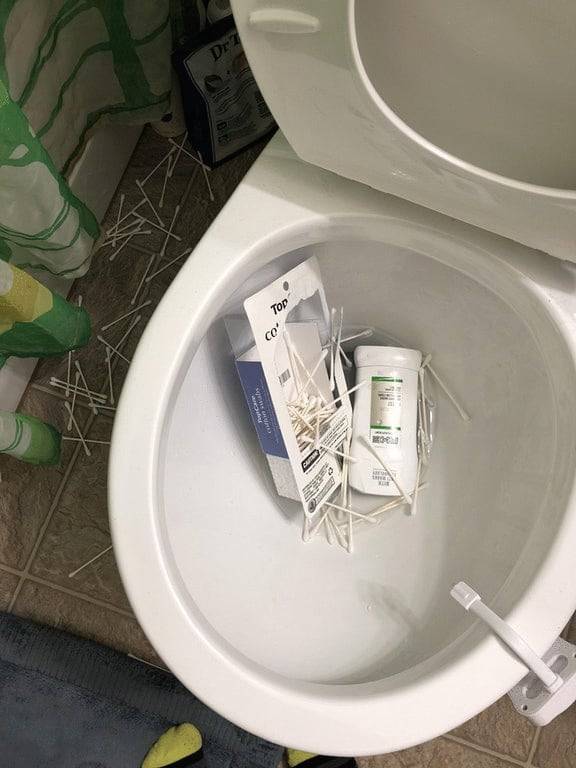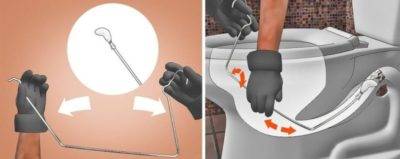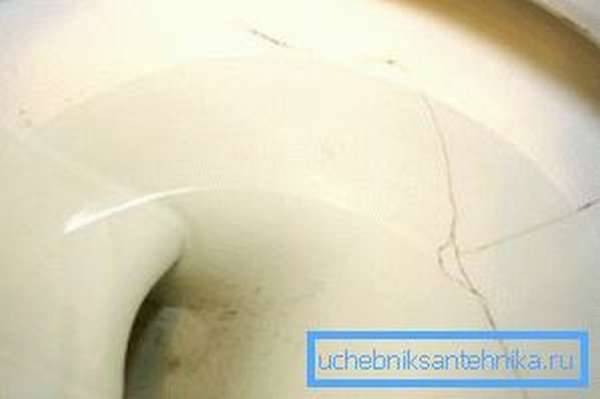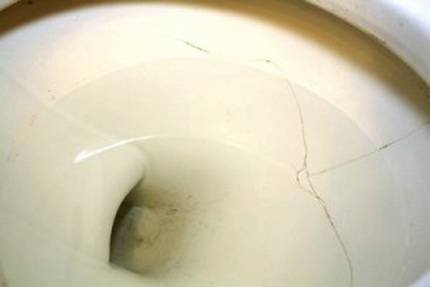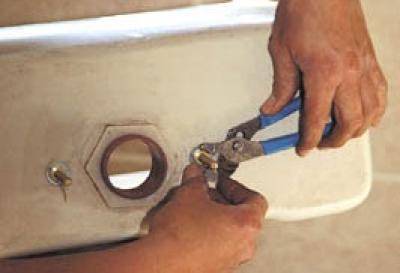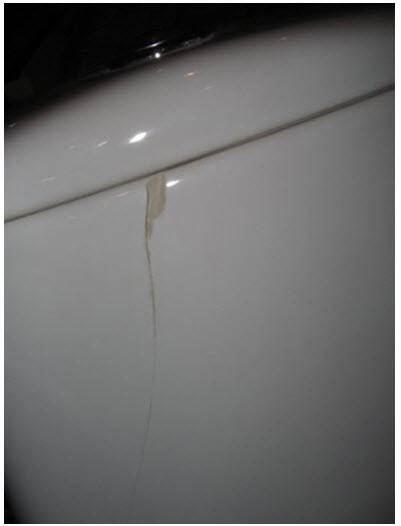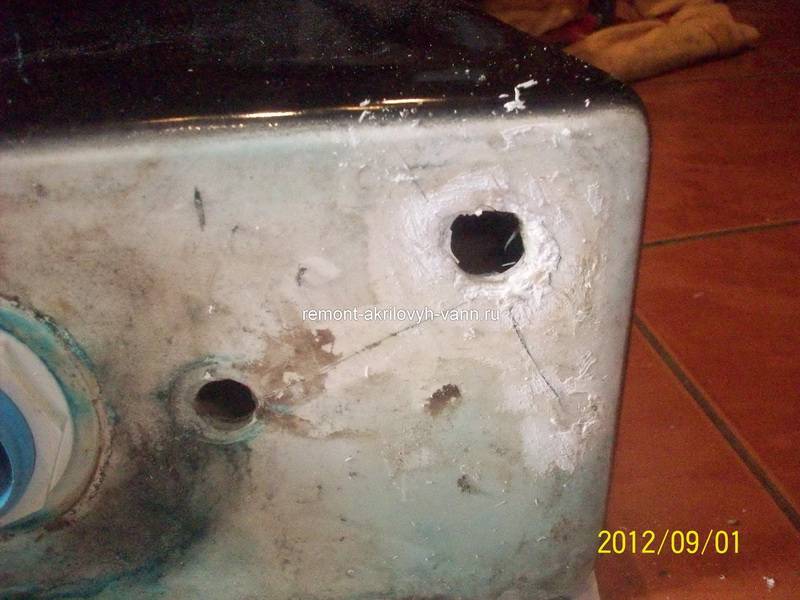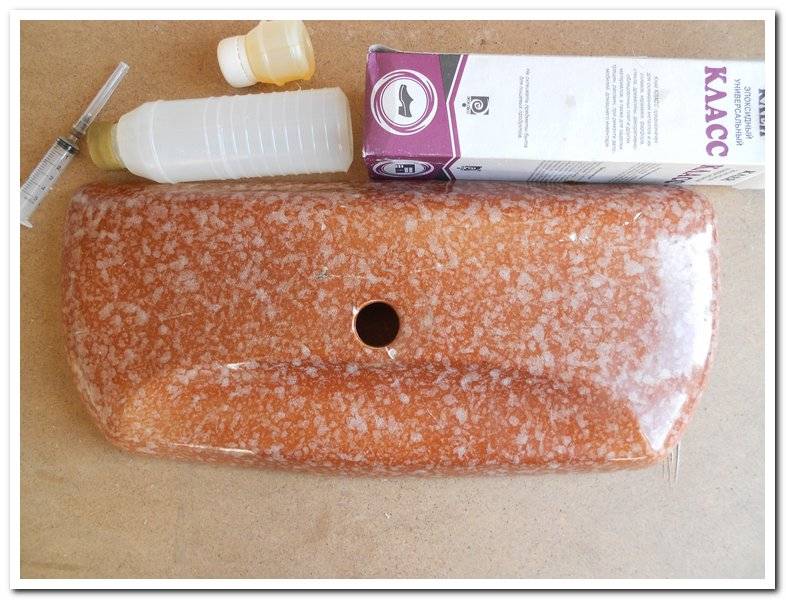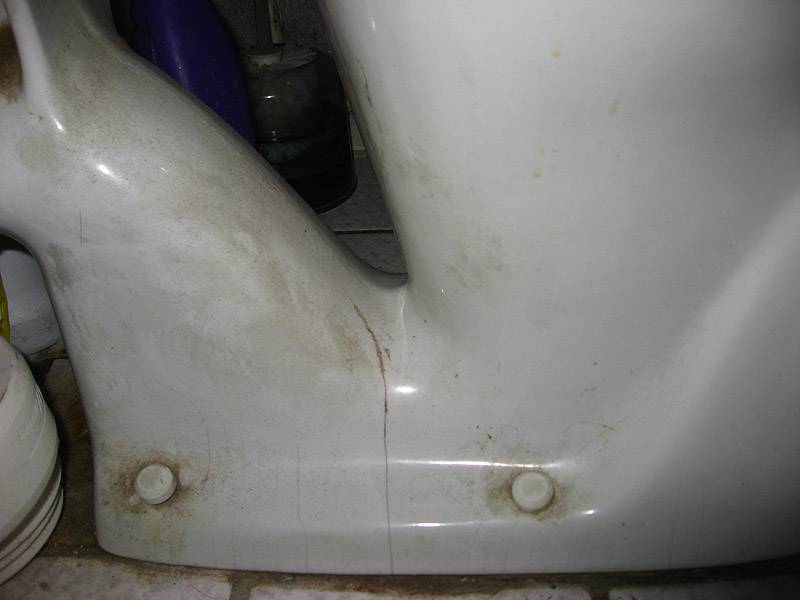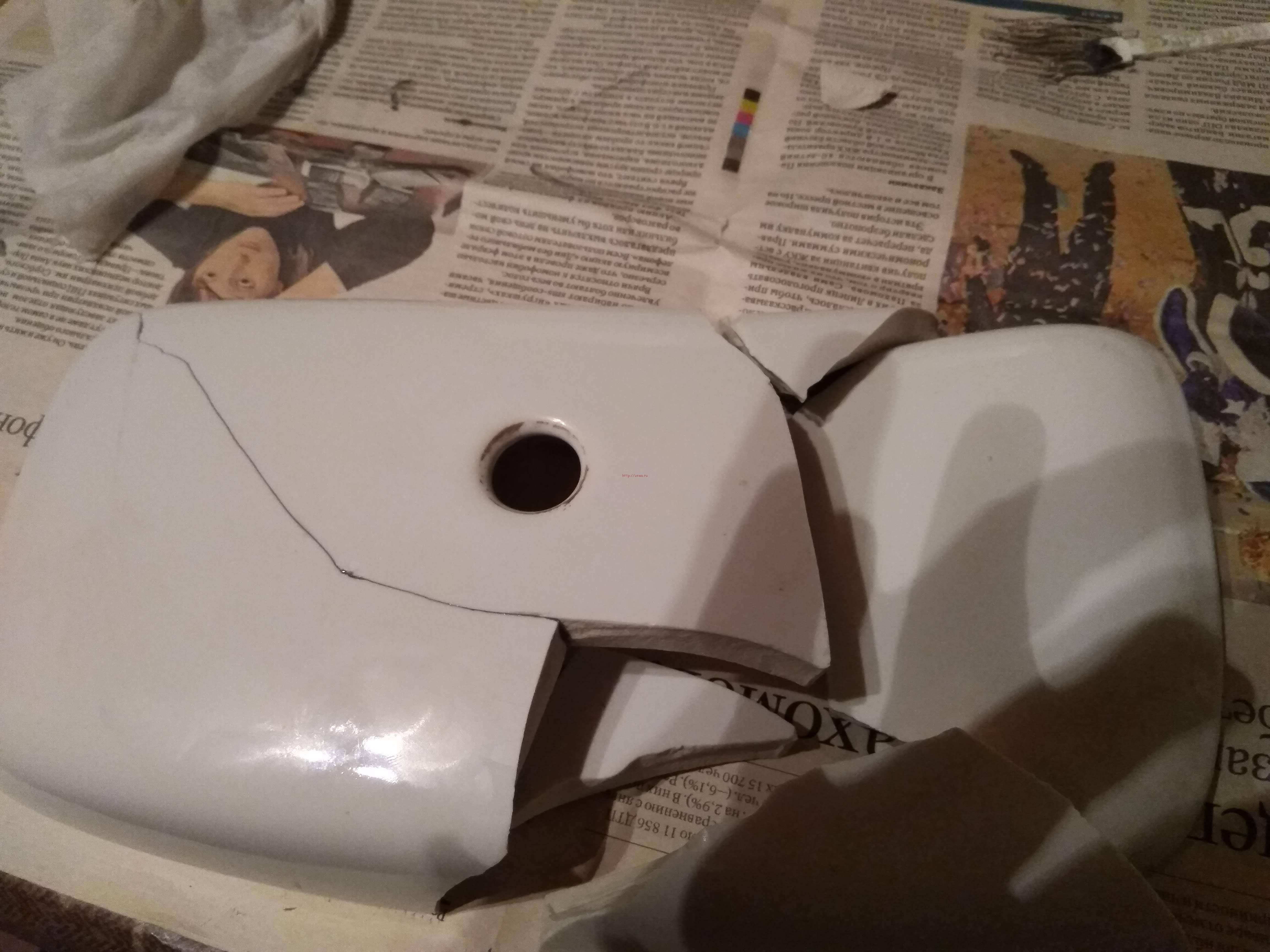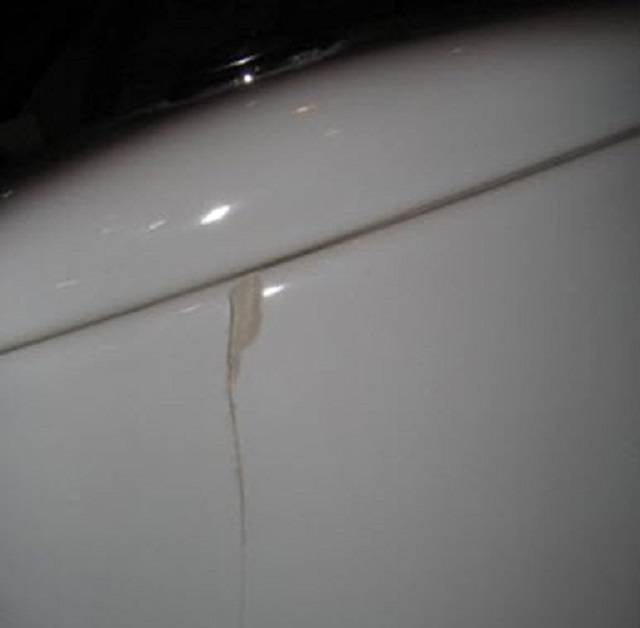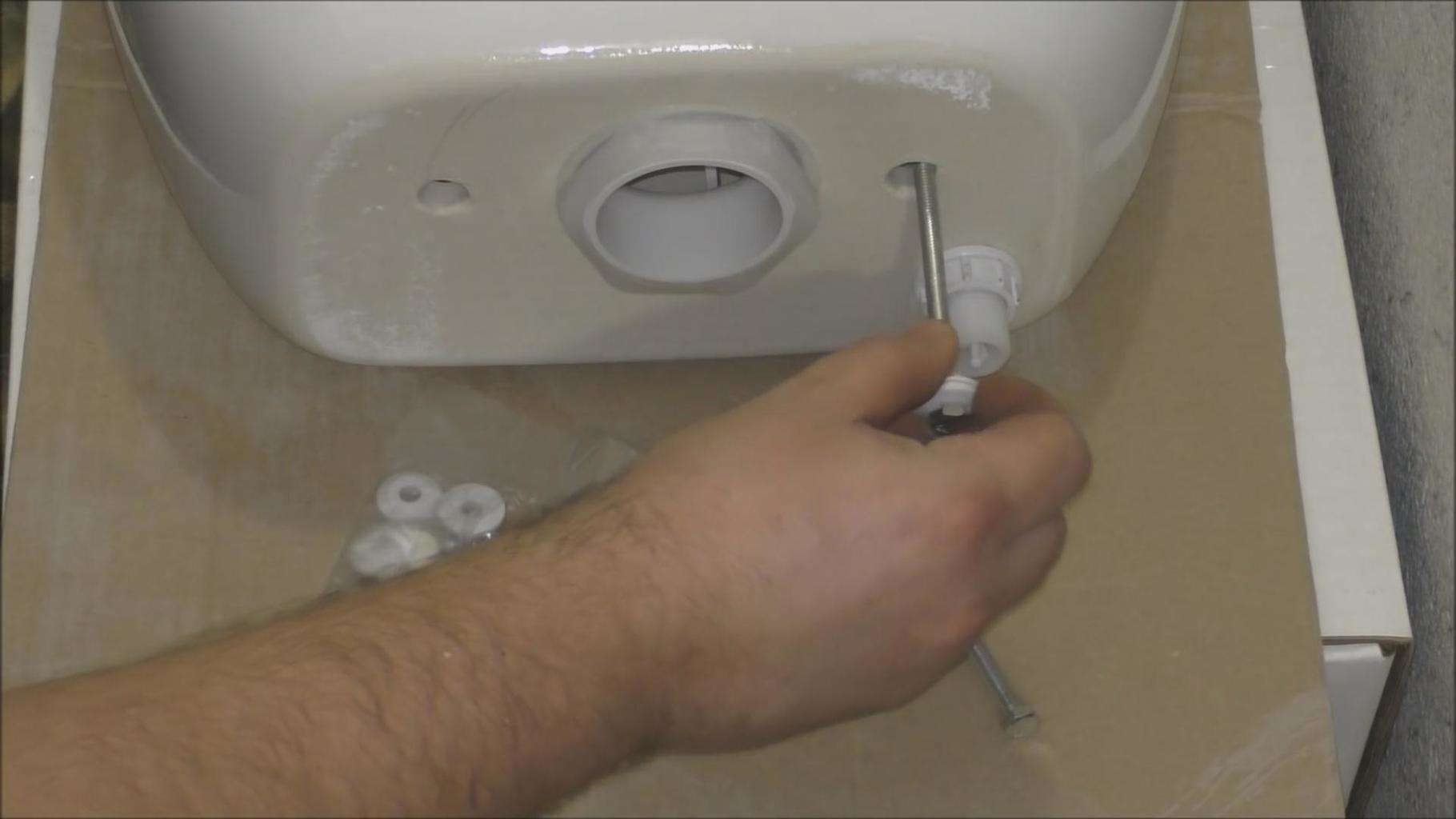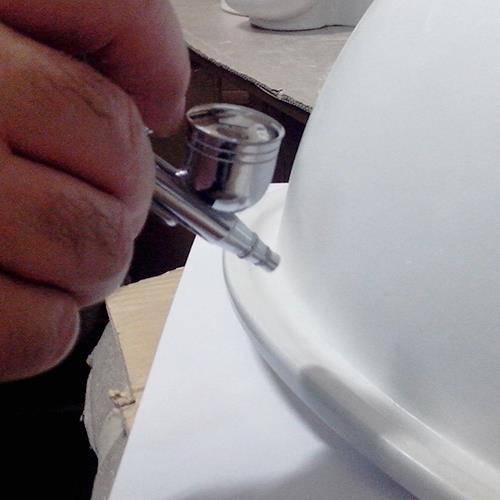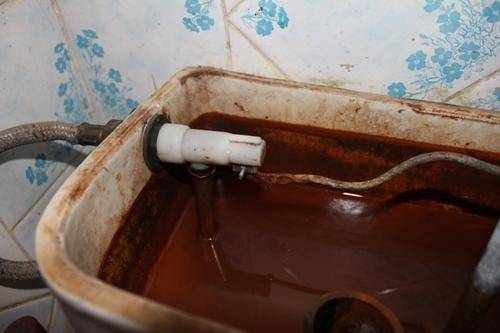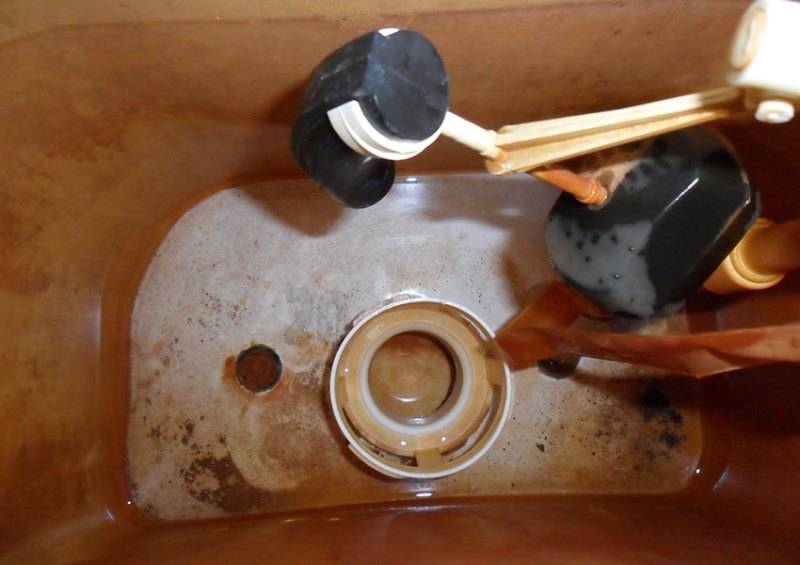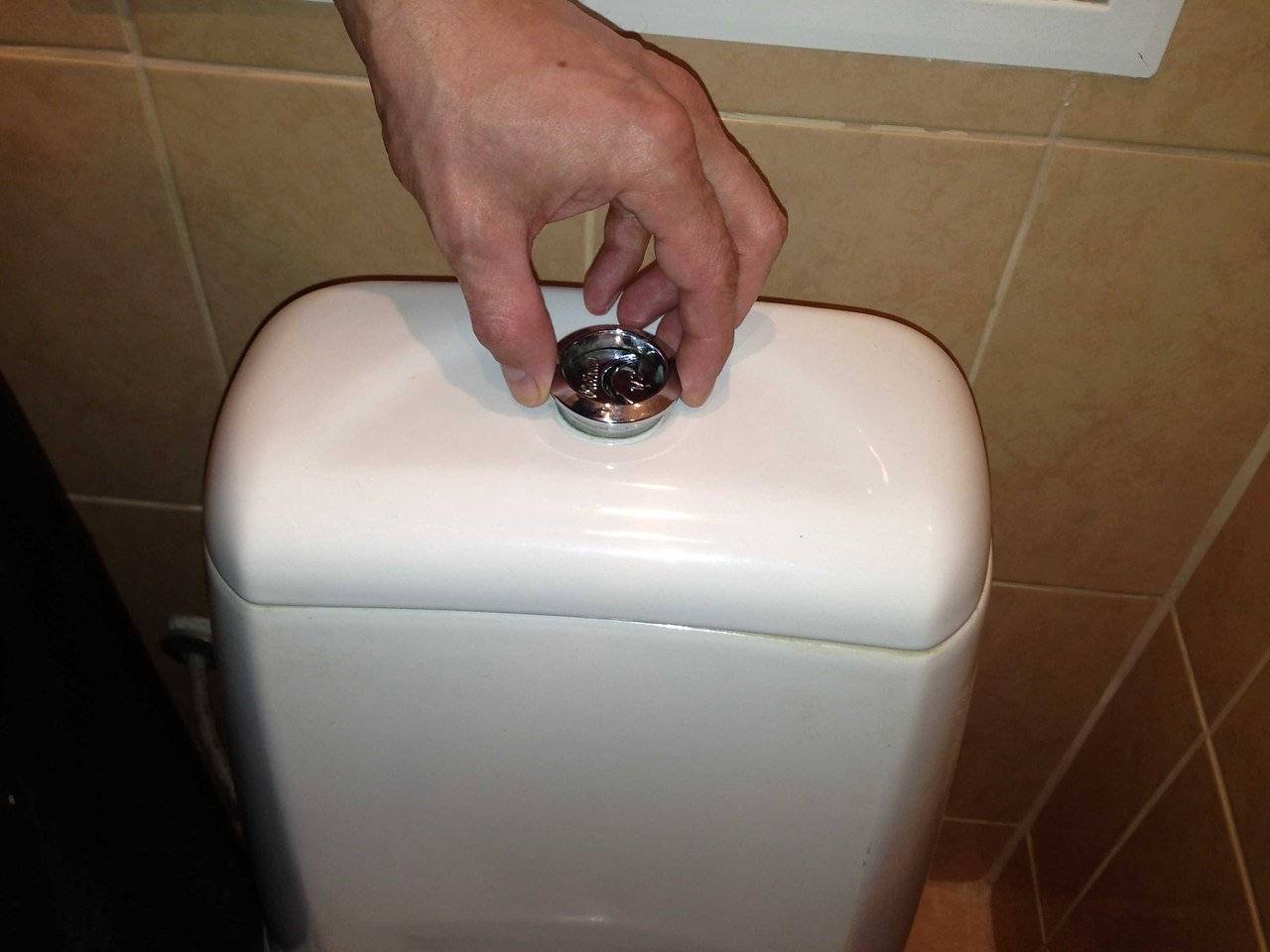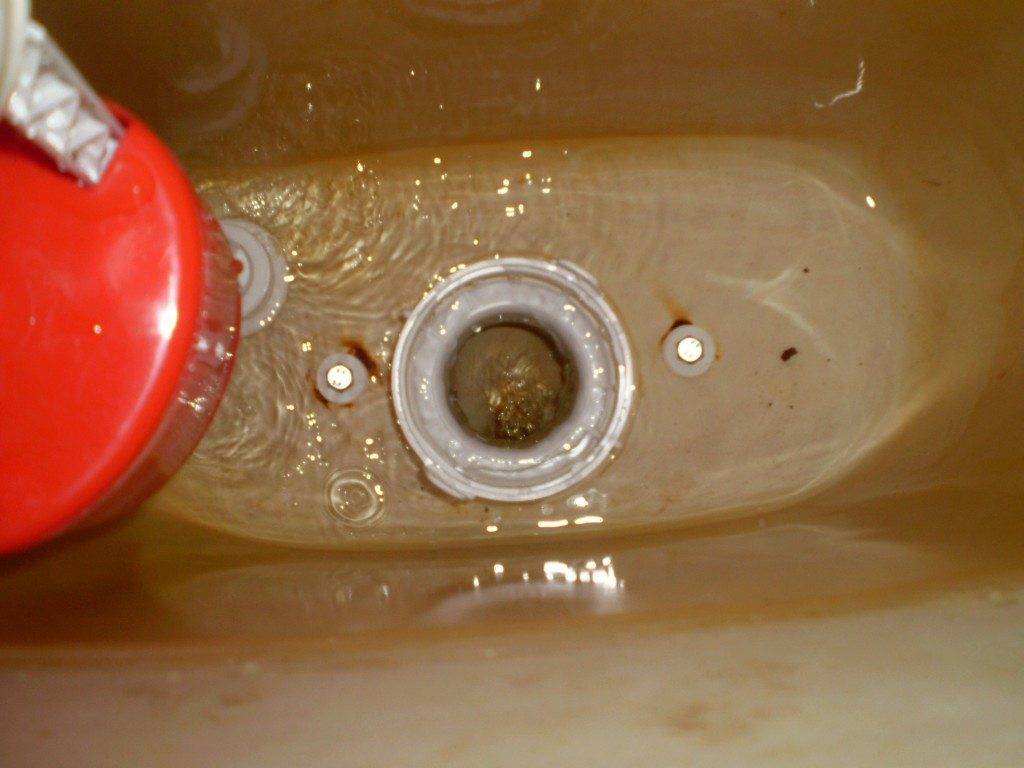How to glue properly at home
The difficulty in gluing the toilet cistern arises due to the fact that cracks and chips on the surface of faience and porcelain do not have a smooth texture. Because of this, the adhesive does not hold together the parts of the broken appliance worse. Therefore, this procedure often has to be carried out two or more times.
What is needed
For gluing porcelain and earthenware products you will need:
- fine sandpaper;
- acetone (gasoline), which is needed to remove grease from the toilet;
- glue;
- Scotch.
You will also need wipes to remove excess adhesive. Before proceeding with gluing, it is necessary to turn off the water supply and drain the tank.
Surface preparation
The procedure for preparing the surface for restoration work depends on the nature of the defect. This procedure will require more effort with deep cracks that run on both sides of the tank.
Unilateral damage
In case of one-sided damage, the cracks must first be cleaned of dirt (a brush with stiff bristles is suitable for this), and then wipe off grease using acetone or gasoline. Similar actions must be taken in relation to the breakaway part.
Bilateral cracks
Before proceeding with cleaning the surface and gluing the cistern, it is recommended, using a thin ceramic drill, to make a hole at the end of the crack. This is necessary in order to prevent further discrepancy between the defect and the split of the plumbing. Then you need to use a grinder to expand the crack and process the inner surfaces according to the described algorithm. In the future, the damage is sealed with a two-component epoxy resin.
Bonding technology
The procedure for gluing earthenware and porcelain appliances depends on the size of the defect. The algorithm within which this procedure is carried out is the same for all applied formulations.
Universal waterproof adhesive
Adhesives of this type are recommended to be used to eliminate defects in places that are not constantly in contact with water:
- the junction of the tank and bowl;
- toilet rim;
- the outer side of the tank and others.
The gluing of the cistern is carried out in three stages. Debris and other foreign particles are removed first. Then the material is stripped of fat. And after that, glue is applied and the broken off fragment is pressed. The period during which you need to hold the material is indicated in the instructions for the glue.
This method is suitable for restoring those parts of the toilet cistern that are not subject to increased stress.
Epoxy resin
Epoxy resin is used to seal one-sided cracks. This product removes defects better than all-purpose glue. To repair a damaged reservoir, you must mix the two components of this agent (hardener and resin) and apply to the problem area. After that, you need to press the gluing place. In this case, any remedy will do, including scotch tape. After the resin has hardened, it is recommended to clean the gluing site with fine sandpaper and felt.
Silicone sealant or liquid welding
Both products are suitable for repairing small cracks and adhesion of chipped fragments. Surface preparation for this case is carried out according to a similar algorithm. If a sealant is used, then first you need to saturate the surfaces with silicone, removing the excess with a spatula, and then walk with a soapy hand, thereby smoothing the composition. This recovery option is convenient in that the tank can be used 20 minutes after the completion of the manipulations.
Liquid welding gives the same result as sealant. This tool must first be rolled out in your hands, and then applied to problem areas, tamping into the cracks.After the four hours required for the paste to harden, sand the surface with emery paper.
Final finishing
It is recommended to treat the surface with fine-grained sandpaper in each of the above cases. If the crack was large, then after sealing, the bonding points should be painted over in the appropriate color. Otherwise, the area where the defect lay will stand out against the background of the rest of the tank.
And it is recommended to seal the inner seam with tile grout.
Adhesive selection
The means with which the problem with the toilet will be solved must have good adhesion strength. Therefore, preference should be given only to special mixtures, avoiding simple universal options that quickly lose the strength of the connection when exposed to water. For this, the following are perfect:
- glue (waterproof, silicate);
- cold welding;
- sealant (waterproof);
- epoxy resin with hardener;
- liquid Nails.
The products have similar properties, and some of them even have a slightly similar composition. Most of all, the last option differs in efficiency - liquid nails will only help to glue the lid of the toilet bowl. They do not give the desired effect when gluing frequently used high pressure elements.
It is recommended to purchase gluing agents from trusted manufacturers who have proven their reliability by producing quality goods. It is recommended to buy one of the following brands:
- Rapid;
- "Mars";
- "Moment Epoxylin";
- "Unicum";
- MC-1;
- BF-2;
- EDP;
- UHU Porzellan;
- EpoxyMax;
- Bliz Steel;
- Poxipol;
- Almaz Press.
If you can't buy glue for a broken toilet, you can prepare a special mixture for gluing yourself. This will require a few specific ingredients. However, the final result will not be worse. There are 3 main options for homemade mortar:
- Mix drill, water and casein in a ratio of 1: 2: 10, add a couple of drops of formalin or aluminum alum, mix thoroughly. The mixture sets within two hours.
- Pour turpentine and light shellac in a 1: 2 ratio into one container, put on fire. After melting, you need to mix everything well. When solidified, the mixture can be reheated before gluing.
- Stir chalk, quicklime and water glass in a ratio of 10: 1: 2.5. You need to prepare the mixture just before installation, as it hardens quickly.
There are other popular recipes, one of which even uses crushed glass.
How to repair a crack in the toilet?
Plumbing equipment seems to be very reliable and nothing can damage it. But in fact, its strength is quite comparable to the fragility of porcelain cups. And any "disrespectful" attitude towards the toilet can lead to the appearance of unpleasant chips and cracks on its surface. Depending on the degree of damage, the owner either repairs cracks in the toilet or replaces the equipment with new ones. If everything is very clear with the second option, then the first one can seriously puzzle the owner of the house, because not everyone knows how to repair a crack in the toilet.
Photo 1. Crack in the base of the toilet.
What is needed for repair
A selection of glue for the toilet is a crucial moment on which the strength of the seam depends, the further use of plumbing.
How to choose glue
It is possible to glue the surface so that the seam is invisible. Silicate glue is often used, as it is resistant to water, temperature changes, a long period of operation, and prevents the spread of fire.
For the reliability of the seam, you can resort to the use of liquid nails. Ready-made adhesive mixtures are also purchased:
- BF-2 is a viscous reddish liquid containing an alcohol solution of polyvinyl acetate with a complex of resins. Waterproof, no mold and mildew on the surface.The composition is flammable, for this reason it is necessary to function away from direct flame and heating appliances, in a thoroughly ventilated room. Bonds ceramics, glass, plastics, etc.
- Unicum is a one-component glue with rubber and reinforcing additives. Scope of application: bonding ceramics, glass, leather, rubber, etc. beige viscous mass. The seam can withstand temperature drops from –40 to 70 degrees. Method of application: the surface of the toilet is cleaned, the glue is applied in a thin layer, after 10 minutes a second layer is applied, after 10 minutes press the surfaces to be glued. The product is put into operation in half a day. The operating temperature should not be less than 10 degrees. The mixture is flammable, for this reason it is necessary to function away from direct flame, heating appliances, in a thoroughly ventilated room.
- Rapid is a glue in the form of a solution of nitrocellulose with resins and organic thinners. Used for bonding leather, wood, porcelain. When working, the planes are degreased, dried, a layer of glue is applied and dries up to 20 minutes, after which a second layer is applied, the planes are strongly pressed, fixed. Complete drying is achieved after two days.
Homemade adhesive
For the purpose of gluing the toilet bowl or the toilet bowl, the glue mass is made independently. To do this, you must follow these recipes:
- Strong, but not easy to use, proportions: one part of crushed glass, two parts of sand (pre-sieved), six parts of sodium silicate.
- Strong, but cures quickly, for this reason it is prepared directly before use, applied to cleaned surfaces: one part lime, ten parts chalk, two and a half parts sodium silicate.
- Glue mixture: one part turpentine, two parts shellac. Mix well, melt over a slow flame, cool. The mass is divided into parts. Melt before use. It is applied in a thin layer on prepared surfaces, pressed tightly, fixed. If excess mixture appears through the seam, wipe it off immediately.
- Gypsum composition: gypsum is soaked in alum for 24 hours. After it is dried, calcined, crushed. To prepare the glue, the dry mixture is diluted with clean water until a creamy mass is formed.
Bonding plumbing
Repair work involving gluing plumbing fixtures is simple. In this case, it is imperative to do everything carefully. It is not difficult to spot the crack on the toilet bowl. Damage appears on the reservoir due to mechanical stress. One of the most dangerous is damage to the base of the toilet. Damage of this nature can grow and are therefore difficult to repair. It is necessary to eliminate the crack immediately in order to extend the life of the plumbing. If you adhere to all the rules of specialists, then you can achieve success.
The subtleties of preparing the surface of the toilet
The first step is to start stripping. It is necessary to clean the chip thoroughly and carefully enough. The work is carried out using abrasive paper. After that, the surface must be thoroughly wiped to get rid of small particles. Degreasing allows the adhesive to adhere well to the material. In this regard, gasoline and acetone are suitable. You also need to evaporate moisture from the surface of the plumbing and warm it up with a hairdryer. Preparation is the best option if the cracks are of a simple shape.
In the case in which the damage has a complex fault relief, a different procedure must be followed. In this regard, repair work implies the need to greatly constrain the bulges.
Plumbers warn that cracks of this shape need to be handled with care. Small debris should be blown out with a hairdryer
After that, the surface must be degreased and dried.
Seam gluing procedure
You can understand the procedure by reading the user manual that comes with the glue. If you adhere to the recommendations prescribed in it, then you can do everything right. Basically, the procedure is identical, it involves applying glue to the surface of the toilet bowl and after it dries. After completing everything, it is necessary to strongly press the elements together. The result is influenced by the compression force. This should be done as hard as possible to maximize the strength of the seam. In this case, the use of an elastic tight tourniquet or clamp will help.
Final finishing procedure
Plumbers determined the algorithm for performing work relative to the seam located inside the plumbing. In this regard, reinforcement is a prerequisite. The dried seam should be sanded with sanding paper. It is necessary to degrease well and dry with a hairdryer. After completing these works, it is necessary to coat the seam with glue. The amplifier is a padded strip of soft metal or thin plastic. After that, you need to thoroughly dry the area that was to be glued.
If the damage was outside, then it should be treated with grout. Builders are advised to stay on the grout intended for tile joints. If it is absent, then you can alternatively use a solution that contains epoxy resin. The compositions are available for sale in different shades, so you need to choose the most appropriate tone in relation to the product.
Which glue to choose?
It is known from practice that so-called liquid nails can be used to securely fasten ceramic fragments.
If it is necessary to restore the cistern, then the gluing technology is exactly the same. Sanitary ware and porcelain adhere well ready-made compounds, which are freely sold in the trade network.
Among them it is necessary to name the long and well-proven glue BF-2. The abbreviation BF stands for "butyralphenol".
The numerical value indicates the percentage of PVB. The higher the number, the higher the elasticity of the adhesive bond. Therefore, BF-6 is not suitable for gluing a toilet bowl.
You can use epoxy to glue the toilet or cistern. It sticks together reliably, but it is not very convenient to handle it.
It is preferable to take Rapid or Unicum glue. The toilet seat is also glued together with any of these compounds.
In the process of choosing an adhesive, each master has to rely on his own experience and advice from his closest circle.
Often you have to prepare such a composition yourself from individual components.
On the basis of liquid nails, you can prepare a high-quality adhesive mixture by adding chalk and a little quicklime to it. At the same time, one should know that this composition "grasps" very quickly.
It is prepared just before gluing. In the process of gluing, excess composition must be removed immediately with a rag or soft cloth.
As practice shows, cracks or chips on the toilet are not uncommon. No one living in the apartment is immune from such a nuisance.
Video:
If the seat is cracked, then it is easier to replace it than to glue it. A glued toilet, of course, will serve for a while.
It should be remembered that the restored plumbing fixture (including the tank) no longer has its original strength.
And after some time it will have to be replaced with a new one.
how to glue the toilet
Forum / Smoking room / how to glue the toilet
Ask your question on our forum without registeringand you will quickly receive an answer and advice from our specialists and forum visitors! Why are we so sure of this? Because we pay them for it!
Learn more
Velov
Rating: 19
September 10, 2016 at 11:15 pm I have experience in gluing ceramics, in particular, the breakaway base of the toilet bowl in the area of the hole for its fastening, with the usual construction mounting glue Moment.Sold in the same packaging as silicone sealant, for a mounting gun. The glue works effectively. I mounted the toilet on a glued ear and have been using the device for more than three years without any problems.
Rank: 85
September 11, 2016 at 7:21 am If the toilet is broken, then usually in the place of cracks there are always chips, so in such cases I would advise you to use epoxy glue.
How to glue a toilet bowl and a cistern
The choice of glue and the method of gluing depends on the location of the defect, its nature (one-sided or two-sided crack, complete chipping).
If a fragment breaks off
When a fragment, for example, a piece of the base, has fallen off from the toilet bowl, and its tightness has not suffered, the element can be glued with universal mixtures. The missing parts of the cistern (elements for fastening shelves or lids) are also attached. Supermoment from Henkel or any other reputable company will do.
Gluing instructions:
- clean the chipped surface from dirt, dust crumbs;
- wait for the surface to dry completely;
- degrease it with gasoline or acetone;
- apply a layer of glue, press the broken off fragment. Fix in a stationary position for the time specified in the instructions of the glue.
If the crack is just outside
Use two-component epoxy to seal a crack in the toilet that is only visible from the outside, or a cracked cistern lid.
- Prepare both components of the product (resin, hardener), a container for mixing them.
- You clean, thoroughly dry the surface that you plan to glue.
- To glue the toilet cistern, you must first close the water supply to it, install forced ventilation and remove all drops from the broken area.
- Degrease the surface.
- Mix resin and hardener according to package directions.
- Apply the compound to the cracked surface.
- Fix the treated area using any available method. For example, tape or duct tape.
- After the resin has completely dried, the remaining seams can be carefully sanded down, then the crack will become invisible. Use M20 or M40 sandpaper and then felt. Without sanding, dirt can collect at the bonding site.
If the crack is visible from both sides
With such damage, the tightness of the toilet bowl or cistern is broken, therefore the glue seam must be waterproof and did not allow the defect to spread over a large area.
To repair a crack in a toilet cistern or a cracked bowl, you will need:
- epoxy with hardener;
- drill with a drill for ceramics;
- grinder with a disc for stone;
- sandpaper and felt for grinding seams.
The principle of gluing a double-sided crack will be as follows.
- At the ends of the cracks, two thin holes must be drilled through. This will stop them from spreading.
- With a grinder, make a depression along the entire length of the crack, deepening half the thickness of the faience. During operation, the material must not be overheated, otherwise the toilet may burst in another place. The side of the depression makes no difference (inside or outside), because the crack will still be noticeable.
- Carefully fill the prepared cavity with the resin mixture. Remove excess resin immediately so that you have to sand the surface less later.
- Wait until the resin has completely hardened, grind the seams.
The process is well illustrated in the video.
If the toilet has burst at the base, then even a waterproof adhesive does not guarantee its tightness. Better to replace it with a new one.
Regardless of the cause of the defects, the questions of what to do when the toilet cistern is cracked, and how you can glue the damaged plumbing fixture, are solved according to a single algorithm
At the same time, it is important to choose a product that can not only remove the defect, but also withstand constant contact with water. For this purpose, both commercial formulations and home-made adhesive mixtures are suitable.
Work order
For preliminary surface preparation, you will need materials: sandpaper, clean rags, degreaser.
First, the place of breakage is cleaned with sandpaper. Then wipe with a clean cloth and degrease. A solvent, acetone, is used as a degreaser.
Dry the surface with a hairdryer. One of the split parts is coated with glue, immediately pressed against the second with maximum effort (but you need to feel the pressing force so that cracking does not occur further). The coupled parts are fixed.
These steps are used to bond small chipped cracks. If a split occurs inside the toilet, it is best to use epoxy for bonding.
If chips occurred on the tank, then they can be glued in the same sequence. Only the material of the tank is thinner and it adheres much faster.
When using resin for gluing, after sanding, the plane is wiped with a felt material and dust is not allowed.
If the toilet is cracked
Repairing a toilet, at first glance, may seem difficult, so many simply call a master who will do everything, but he will definitely take a certain amount of money from you. Perhaps this seems like the only way out, especially if you have never faced similar problems before. And many simply do not know how to glue the toilet bowl. But don't jump to conclusions. Try to fix the breakdown yourself, especially if the problem is that your toilet or cistern is cracked. After all, the crack can be sealed. The main thing is not to panic and do the job carefully.
So, if you are faced with the fact that your toilet cracked, then first you need to find out exactly where the breakdown occurred. And it is not at all necessary to count how much money you have left in your wallet and remember where there is a store with plumbing nearby, because you can fix this problem yourself with the help of improvised means. Consider the moments when you have a crack in the toilet, cistern, or if a piece of ceramic breaks off from them. All this is fixable if you approach this matter correctly.
Toilet bowl drawing.
If your toilet has a crack, you need to seal it up as soon as possible. Firstly, so that it does not become even larger, and secondly, so that water does not leak. To seal the crack that has formed on the toilet, you need to have glue. It must be waterproof. You can also use cold welding or silicone sealant. Find sandpaper and a spatula. It's good if you also have a construction hairdryer.
When you have found everything you need for the repair, you can proceed directly to it and proceed. Take a blow dryer and warm up the crack. This must be done not only outside, but also inside. Such actions are necessary in order for excess moisture to evaporate. It is necessary to degrease the surface on both sides. To do this, use either acetone or solvents. Next, gently coat the surface with epoxy. Then stick the strips of plastic on both sides and wait for everything to dry. And already at the very end, it is necessary to apply waterproof glue to the crack.
But it so happens that a piece of ceramics just broke off from the toilet. Then you need glue, which must be waterproof. Apply a thin layer of glue to the breakaway piece, press it to the place from which it broke off, and after four hours it will stick. Next, treat the seam that you have formed with joint putty or filled epoxy. After that, it is better to clean that place with sandpaper.
Choosing glue for a broken earthenware toilet cistern
The toilet can be glued so that no seams are visible
You need to know how to glue the toilet, so as not to waste your money in vain. Consumers who know how to glue plastic or earthenware can proceed with the gluing procedure. Experienced craftsmen know silicate glue."What it is?" - asks beginner plumbers.
The composition of the silicate glue can be presented in the form of the formula Na2O (SiO2)n. It is an aqueous mixture of sodium silicate. It has many advantages:
- fire resistance;
- resistance to temperature changes;
- waterproofness;
- long service life.
You will not find information on how to glue a ceramic toilet bowl with silicate glue or liquid glass. They are glued to paper, cardboard, wood. It is a high quality waterproofing. Silicate glue is part of the adhesives for the materials from which plumbing fixtures are made. Since sooner or later the damaged plumbing will need to be replaced, use the budget option. Silicate glue allows you to prepare adhesives that can be used to repair plumbing fixtures. Liquid glass allows the owner of the house to save finances.
The BF-2 glue is recognized as a universal option by professionals. When you have it at hand, you don't have to worry about how to glue the porcelain securely. It is suitable for the repair of plastic products. Puzzled over how to repair a crack in plastic with high quality? Moment glue is ready to cope with this task.


